It could often have been seen as a bit of a slight in the past if someone asked, do you need glasses? Yet, that may be about to change.
According to a TD in the Dáil last year, there is a shortage of around 670 agricultural mechanics nationally, which was data sourced from the FTMTA.
When you combine this with deficiencies in other craft areas such as plant mechanics, automotive, truck, refrigeration, electrical and so forth, it is clear that a solution is needed and fast.
While many farmers have witnessed the move from the vice grip to the laptop to help fix the modern tractor, the question is, how will the agricultural industry overall move forward? The next frontier may well be a pair of glasses!
However, these are not just any ordinary pair of glasses but highly specialised smart glasses to help the likes of a mechanic, for instance, to carry out tasks using a combination of technologies such as augmented reality (AR) to help troubleshoot on site.
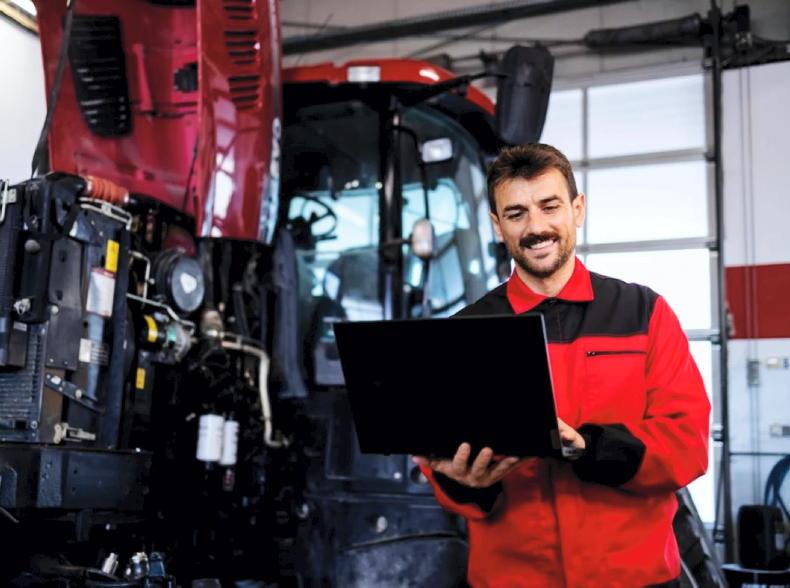
Technician using a laptop to fault find.
Smart Farming – Farming 4.0
The agriculture industry is becoming very ‘techie’ in recent years and there are lots of marketing buzzwords banded about by IT companies and academics that often irritate the farming community as it is seen as jargon.
Simply put, Farming 4.0 is a term given to what’s deemed the fourth revolution of digital technology relative to farming, and the internet of things (IOT) is the hardware and software combined to enable it all to happen in terms of high-speed connectivity and data transfer.
There is always change happening as can be seen with the evolution in communication from the telephone to the wireless mobile phone and it then morphed to a messaging service and with wireless internet capability, various apps developed.
Now, wearable devices such as smartwatches and glasses will go from a must-have device to the accepted norm eventually.
What is augmented reality?
Augmented reality (AR) is a term that describes technology that uses miniature cameras inside the glasses and specialised AR software that examine what the camera sees.
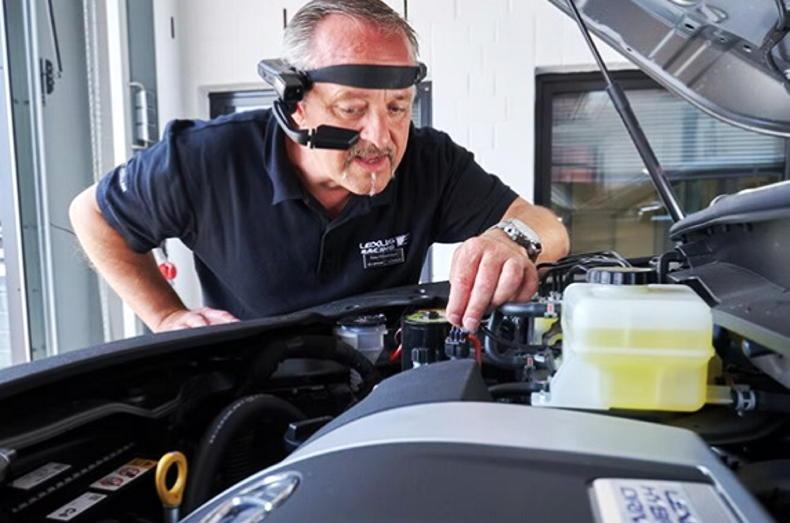
TeamViewer products helping a mechanic troubleshoot a wiring issue in a car.
The live graphical images seen by the user are being overlaid onto his/her own surroundings while working, but also helping is an offsite technician who sees what the user is viewing and can send virtual images to assist.
According to Sarah Wilkinson, “TeamViewer’s AR technology can deliver dynamic instructions directly into an employee’s field of vision when used with smart glasses. This ensures workers can access relevant guidance at each workflow step; for instance, to repair a complex problem”.
It potentially means no climbing in and out from under a machine or constantly back and forth to check manufacturers’ parameters from a tech manual or trying to hold tools in one hand, parts in another and also juggle a mobile phone.
This real-time visual guidance, plus pictorial graphical instructions or schematics on to the various components, may not only enhance the image of the agricultural sector but, more importantly, lead to greater speed and fewer errors.
Sarah explains how TeamViewer started as a remote service to help people fix issues they were experiencing with their laptop, whereby a user shared their screen from home while a professional remotely dialled in to help fix technical issues.
The advantages were obvious as you didn’t have to leave your house and a qualified person took control of your computer to rectify problems remotely. It was fast with very little downtime.
Advancements
According to Sarah, “AR technology today is used in many industries and grew rapidly over the years due to technological advancements and capabilities and its growth was heightened even further by the COVID-19 lockdown.” For example, she explains, in healthcare with restrictions, it helped to reduce hospital waiting lists as patients were examined by specialists without having to attend the hospital. Other sectors which are seeing a huge increase in popularity with AR are retail, sport and entertainment. The automotive sector is also experiencing rapid growth from the major car brands.
While it is still in its infancy in the agricultural sphere, TeamViewer feels it is on the cusp of a new agricultural revolution, and that machinery manufacturers will embrace this technology even more.
TeamViewer is very confident that it could help alleviate current mechanics with on-site technical issues such as wiring, software issues, intermittent fault finding, hydraulic routing, component identification, etc.
Considering the complexity of today’s farm machinery and the large portfolios offered by the major manufacturers, combined with the constant updating of numerous models within the various farming sectors, it’s impossible to be up to date on every piece of kit.
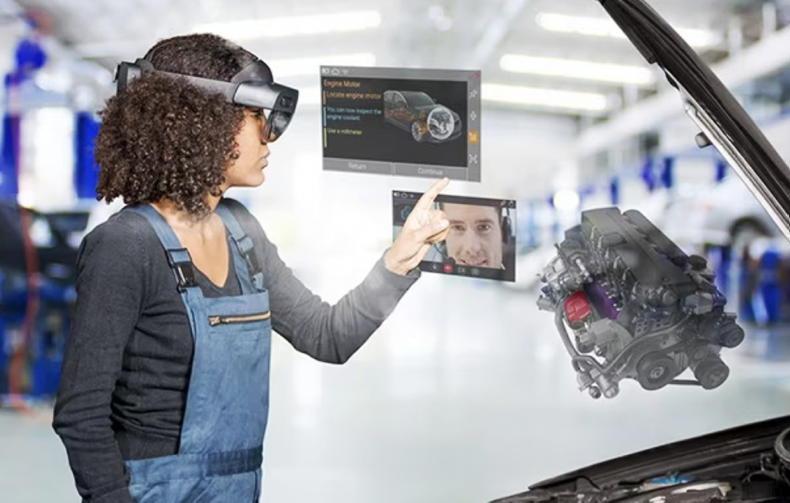
Augmented reality.
Sarah explains that this technology benefits all stakeholders in the farm machinery industry to become more efficient, whether that’s manufacturers, dealers or mechanics down to the end users.
Key features of TeamViewer
1 xAssist, which is a remote expert support. It offers the following features:
Provides real-time visual guidance to field workers.Live pointer and whiteboard: enable off site experts to highlight specific areas on the screen to the technician on-site.Instant translations in live chat: overcome language barriers instantly.Screen and file sharing. Session recording for training and future use.Service reporting and call management: efficiently manage and document all support interactions.Object and character recognition (OCR): quickly identify and analyse parts and machinery.2 xInspect, which is an enhanced maintenance and after-sales service.
Use AR to perform detailed inspections.Provide step-by-step visual guidance to technicians in the field.Instant documentation: capture and store inspection results instantly for compliance and record-keeping.Streamline maintenance workflows and improve efficiency.According to Sarah, TeamViewer has a ready-made, off-the-shelf commercial solution to help dealers and manufacturers in Ireland.
“Liebherr and Ford are just some of our customers in construction equipment and automotive that have their technicians and mechanics using the technology to help them find and test components within complex systems.”
It is like having an expert on site steering the mechanic to help resolve the issue and highlighting the components and help guide the mechanic step by step to tackle a problem that they never came up against previously.
“Formula 1 teams like Mercedes use it to help technicians on the ground from the factory with issues that arise during the race weekends.”
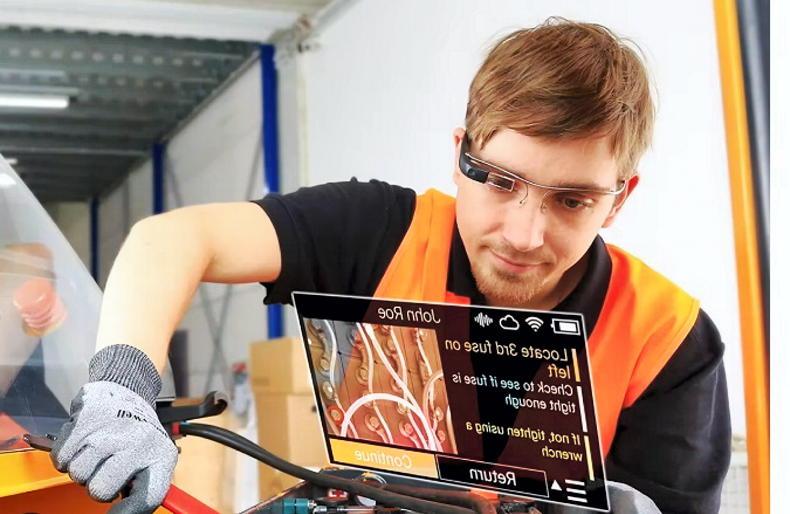
AR is a term that describes technology that uses miniature cameras inside the glasses and specialised AR software that examines what the camera sees.
Mechanics often work remotely and alone; therefore, it’s not like some other industries such as construction or manufacturing sites, where staff may be surrounded by many more technical people to discuss the best course of action.
AR brings environmental benefits, efficiency in work output, administration and record-keeping plus training (as the list is endless with this technology) for companies to become more productive with the staff they already have.
The saving in time is phenomenal for a business, and the gains in efficiency are potentially extraordinary.
Speaking to mechanics all over Ireland, they often say training courses offered by the major manufacturers are very good.
However, they might not see the engine, gearbox or control panel they covered for six months to a year perhaps afterwards, as the training is often on during the off-season periods.
Sarah says it’s difficult to be specific on pricing as there are so many packages. In short, the most basic packages go from a few hundred euro up to a few thousand for the glasses, with all the bells and whistles.
Seeing the potential benefits these products can offer, they are priced in a very reasonable manner.
Considering dealers are under pressure to maintain the machines, plus the mechanics must work long hours during the harvest, this is also deterring young people from joining the industry or causing them to leave.
Manufacturers and dealers have a role to play here also and need to utilise technology to make the working conditions more favourable in order to improve an already difficult work environment.
Machinery is increasingly more expensive and with tight weather windows, the mechanic is the frontline worker in this industry. All of this combined with the physical nature of the work, the travelling, the timesheets and the paperwork required for billing afterwards, is all becoming more of a headache. Maybe it’s time we all put on our glasses.
It could often have been seen as a bit of a slight in the past if someone asked, do you need glasses? Yet, that may be about to change.
According to a TD in the Dáil last year, there is a shortage of around 670 agricultural mechanics nationally, which was data sourced from the FTMTA.
When you combine this with deficiencies in other craft areas such as plant mechanics, automotive, truck, refrigeration, electrical and so forth, it is clear that a solution is needed and fast.
While many farmers have witnessed the move from the vice grip to the laptop to help fix the modern tractor, the question is, how will the agricultural industry overall move forward? The next frontier may well be a pair of glasses!
However, these are not just any ordinary pair of glasses but highly specialised smart glasses to help the likes of a mechanic, for instance, to carry out tasks using a combination of technologies such as augmented reality (AR) to help troubleshoot on site.

Technician using a laptop to fault find.
Smart Farming – Farming 4.0
The agriculture industry is becoming very ‘techie’ in recent years and there are lots of marketing buzzwords banded about by IT companies and academics that often irritate the farming community as it is seen as jargon.
Simply put, Farming 4.0 is a term given to what’s deemed the fourth revolution of digital technology relative to farming, and the internet of things (IOT) is the hardware and software combined to enable it all to happen in terms of high-speed connectivity and data transfer.
There is always change happening as can be seen with the evolution in communication from the telephone to the wireless mobile phone and it then morphed to a messaging service and with wireless internet capability, various apps developed.
Now, wearable devices such as smartwatches and glasses will go from a must-have device to the accepted norm eventually.
What is augmented reality?
Augmented reality (AR) is a term that describes technology that uses miniature cameras inside the glasses and specialised AR software that examine what the camera sees.

TeamViewer products helping a mechanic troubleshoot a wiring issue in a car.
The live graphical images seen by the user are being overlaid onto his/her own surroundings while working, but also helping is an offsite technician who sees what the user is viewing and can send virtual images to assist.
According to Sarah Wilkinson, “TeamViewer’s AR technology can deliver dynamic instructions directly into an employee’s field of vision when used with smart glasses. This ensures workers can access relevant guidance at each workflow step; for instance, to repair a complex problem”.
It potentially means no climbing in and out from under a machine or constantly back and forth to check manufacturers’ parameters from a tech manual or trying to hold tools in one hand, parts in another and also juggle a mobile phone.
This real-time visual guidance, plus pictorial graphical instructions or schematics on to the various components, may not only enhance the image of the agricultural sector but, more importantly, lead to greater speed and fewer errors.
Sarah explains how TeamViewer started as a remote service to help people fix issues they were experiencing with their laptop, whereby a user shared their screen from home while a professional remotely dialled in to help fix technical issues.
The advantages were obvious as you didn’t have to leave your house and a qualified person took control of your computer to rectify problems remotely. It was fast with very little downtime.
Advancements
According to Sarah, “AR technology today is used in many industries and grew rapidly over the years due to technological advancements and capabilities and its growth was heightened even further by the COVID-19 lockdown.” For example, she explains, in healthcare with restrictions, it helped to reduce hospital waiting lists as patients were examined by specialists without having to attend the hospital. Other sectors which are seeing a huge increase in popularity with AR are retail, sport and entertainment. The automotive sector is also experiencing rapid growth from the major car brands.
While it is still in its infancy in the agricultural sphere, TeamViewer feels it is on the cusp of a new agricultural revolution, and that machinery manufacturers will embrace this technology even more.
TeamViewer is very confident that it could help alleviate current mechanics with on-site technical issues such as wiring, software issues, intermittent fault finding, hydraulic routing, component identification, etc.
Considering the complexity of today’s farm machinery and the large portfolios offered by the major manufacturers, combined with the constant updating of numerous models within the various farming sectors, it’s impossible to be up to date on every piece of kit.

Augmented reality.
Sarah explains that this technology benefits all stakeholders in the farm machinery industry to become more efficient, whether that’s manufacturers, dealers or mechanics down to the end users.
Key features of TeamViewer
1 xAssist, which is a remote expert support. It offers the following features:
Provides real-time visual guidance to field workers.Live pointer and whiteboard: enable off site experts to highlight specific areas on the screen to the technician on-site.Instant translations in live chat: overcome language barriers instantly.Screen and file sharing. Session recording for training and future use.Service reporting and call management: efficiently manage and document all support interactions.Object and character recognition (OCR): quickly identify and analyse parts and machinery.2 xInspect, which is an enhanced maintenance and after-sales service.
Use AR to perform detailed inspections.Provide step-by-step visual guidance to technicians in the field.Instant documentation: capture and store inspection results instantly for compliance and record-keeping.Streamline maintenance workflows and improve efficiency.According to Sarah, TeamViewer has a ready-made, off-the-shelf commercial solution to help dealers and manufacturers in Ireland.
“Liebherr and Ford are just some of our customers in construction equipment and automotive that have their technicians and mechanics using the technology to help them find and test components within complex systems.”
It is like having an expert on site steering the mechanic to help resolve the issue and highlighting the components and help guide the mechanic step by step to tackle a problem that they never came up against previously.
“Formula 1 teams like Mercedes use it to help technicians on the ground from the factory with issues that arise during the race weekends.”

AR is a term that describes technology that uses miniature cameras inside the glasses and specialised AR software that examines what the camera sees.
Mechanics often work remotely and alone; therefore, it’s not like some other industries such as construction or manufacturing sites, where staff may be surrounded by many more technical people to discuss the best course of action.
AR brings environmental benefits, efficiency in work output, administration and record-keeping plus training (as the list is endless with this technology) for companies to become more productive with the staff they already have.
The saving in time is phenomenal for a business, and the gains in efficiency are potentially extraordinary.
Speaking to mechanics all over Ireland, they often say training courses offered by the major manufacturers are very good.
However, they might not see the engine, gearbox or control panel they covered for six months to a year perhaps afterwards, as the training is often on during the off-season periods.
Sarah says it’s difficult to be specific on pricing as there are so many packages. In short, the most basic packages go from a few hundred euro up to a few thousand for the glasses, with all the bells and whistles.
Seeing the potential benefits these products can offer, they are priced in a very reasonable manner.
Considering dealers are under pressure to maintain the machines, plus the mechanics must work long hours during the harvest, this is also deterring young people from joining the industry or causing them to leave.
Manufacturers and dealers have a role to play here also and need to utilise technology to make the working conditions more favourable in order to improve an already difficult work environment.
Machinery is increasingly more expensive and with tight weather windows, the mechanic is the frontline worker in this industry. All of this combined with the physical nature of the work, the travelling, the timesheets and the paperwork required for billing afterwards, is all becoming more of a headache. Maybe it’s time we all put on our glasses.









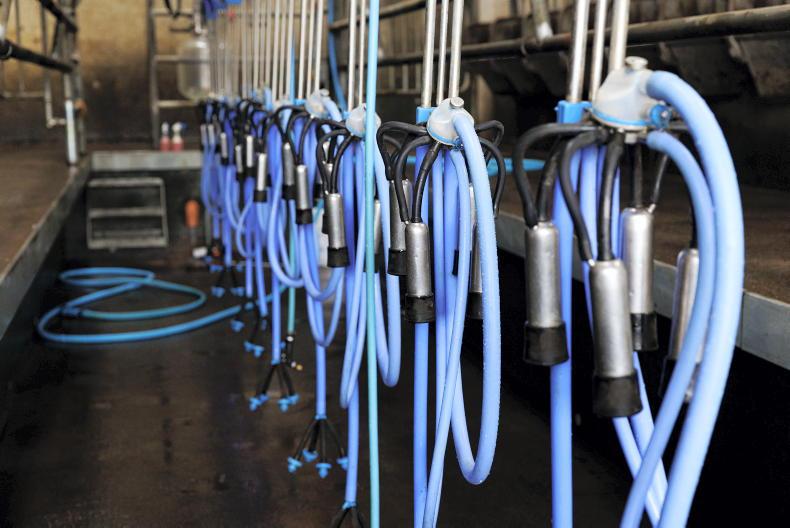


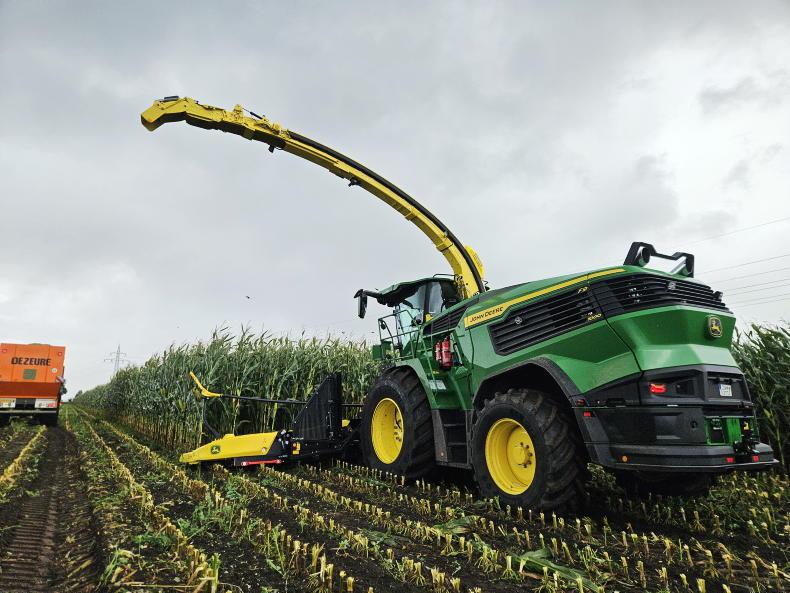
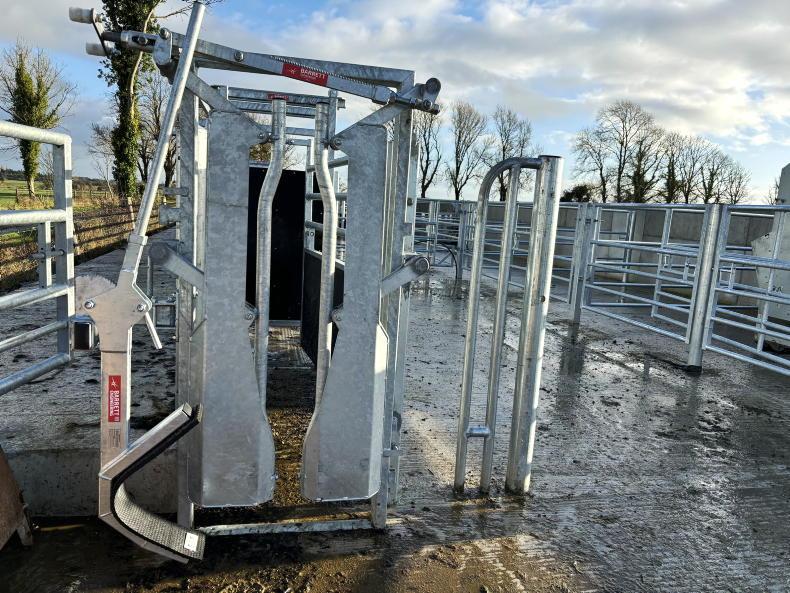
SHARING OPTIONS